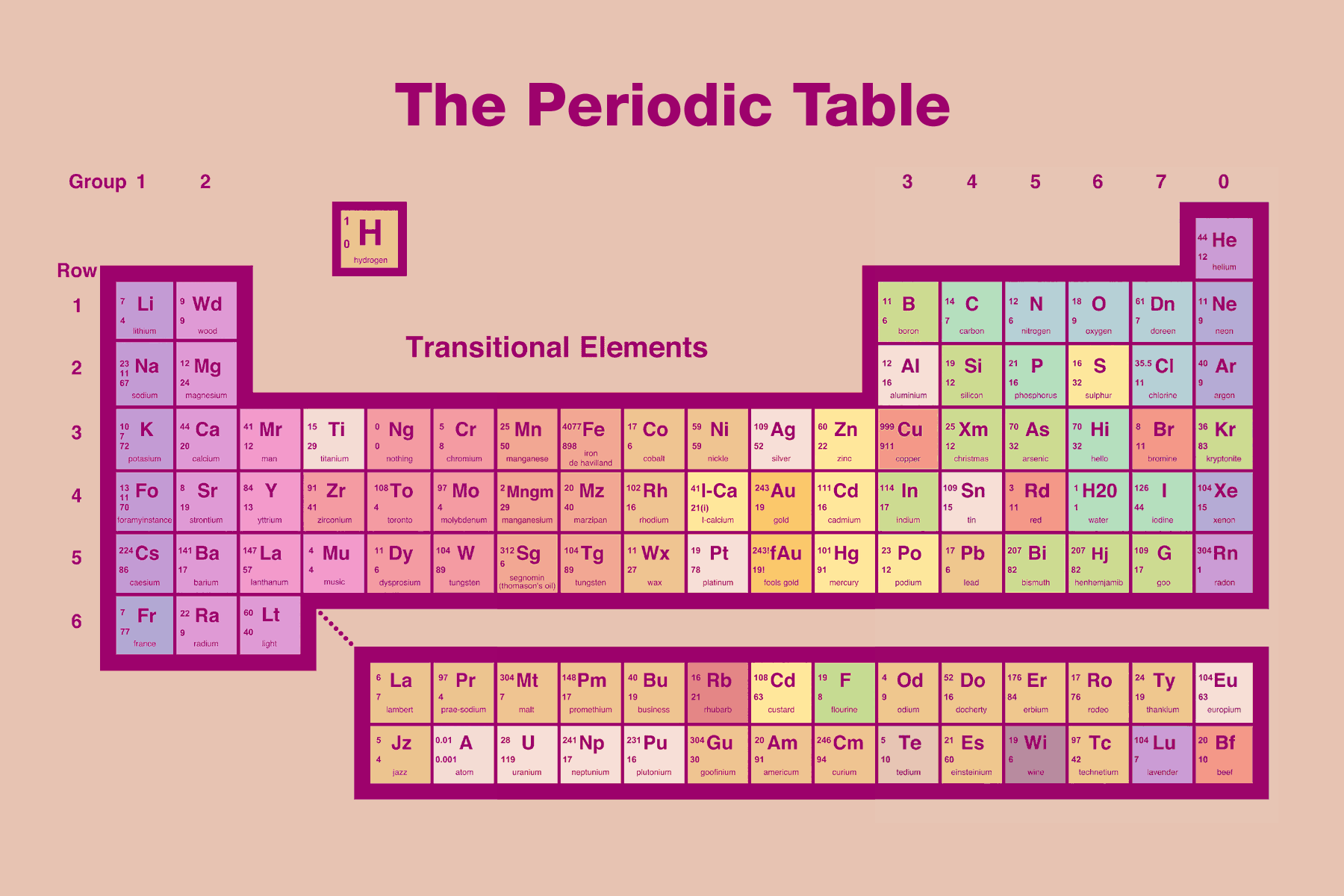

The biggest (permanent) periodic tableĪt the University of Murcia in Spain, the chemistry faculty building is decorated with 118 75×75cm metal element squares making up a 150m 2 periodic table, thought to be the biggest permanent one in existence (although we have heard a rumour another chemistry department is planning an even bigger one so watch out for that). But what better time than the International Year of the Periodic Table (IYPT) to look at some of the most notable examples? Here are a few that have caught our eye. It would be impossible to count all the times it has been reimagined and recreated over the years. It is fair to say it’s come a long way since then, evolving through countless tweaks, revisions and updates into a thing of beauty that is instantly recognisable to scientists and non-scientists alike. That is, similar elements do not have similar atomic weights.150 years ago, the periodic table was just a few ordered lists of element symbols and atomic masses hastily scribbled by Dmitry Mendeleev on the back of an invitation to a cheese factory. This law states that when the elements are listed in order of increasing atomic weights, their properties vary periodically. If a list were made of all elements, we would find the sequence halogen, noble gas, alkali metal, and alkaline-earth metal several more times.ĭmitri Ivanovich Mendeleev proposed the periodic law behind his periodic table compiling. Exactly the same sequence is repeated eight elements later (Ne, Na, and Mg), but this time a halogen (F) precedes the noble gas. The second, third, and forth elements on the list (He, Li, and Be) are a noble gas, an alkali metal, and an alkaline-earth metal, respectively. Obtaining atomic weights, we haveĮlements which belong to families we have already discussed are indicated by shading around their symbols. You can see that such a relationship exist by listing symbols for the first dozen elements in order of increasing relative mass.

Therefore it seems reasonable to expect some correlation between this microscopic property and macroscopic chemical behavior. This could account for the related chemical reactivities and analogous compounds of these elements.Īccording to Dalton’s atomic theory, different kinds of atoms may be distinguished by their relative masses (atomic weights). Atoms of sodium ought to be similar in some way to atoms of lithium, potassium, and the other alkali metals. The similarities among macroscopic properties within each of the chemical families lead one to expect microscopic similarities as well. 1950-1999 (+15 elements): Manhattan_Project and Particle physics issues, for atomic numbers 97 and above.1900-1949 (+13 elements): impulse from the old quantum theory, the Refinements to the periodic table, and quantum mechanics.1850-1899 (+23 elements): the age of Classifying Elements received an impulse from the Spectrum analysis.1800-1849 (+22 elements): impulse from Scientific Revolution and Atomic theory and Industrial Revolution.Before 1800 (36 elements): discoveries during and before the Age of Enlightenment.\): Periodic Table showing when each element was discovered


 0 kommentar(er)
0 kommentar(er)
